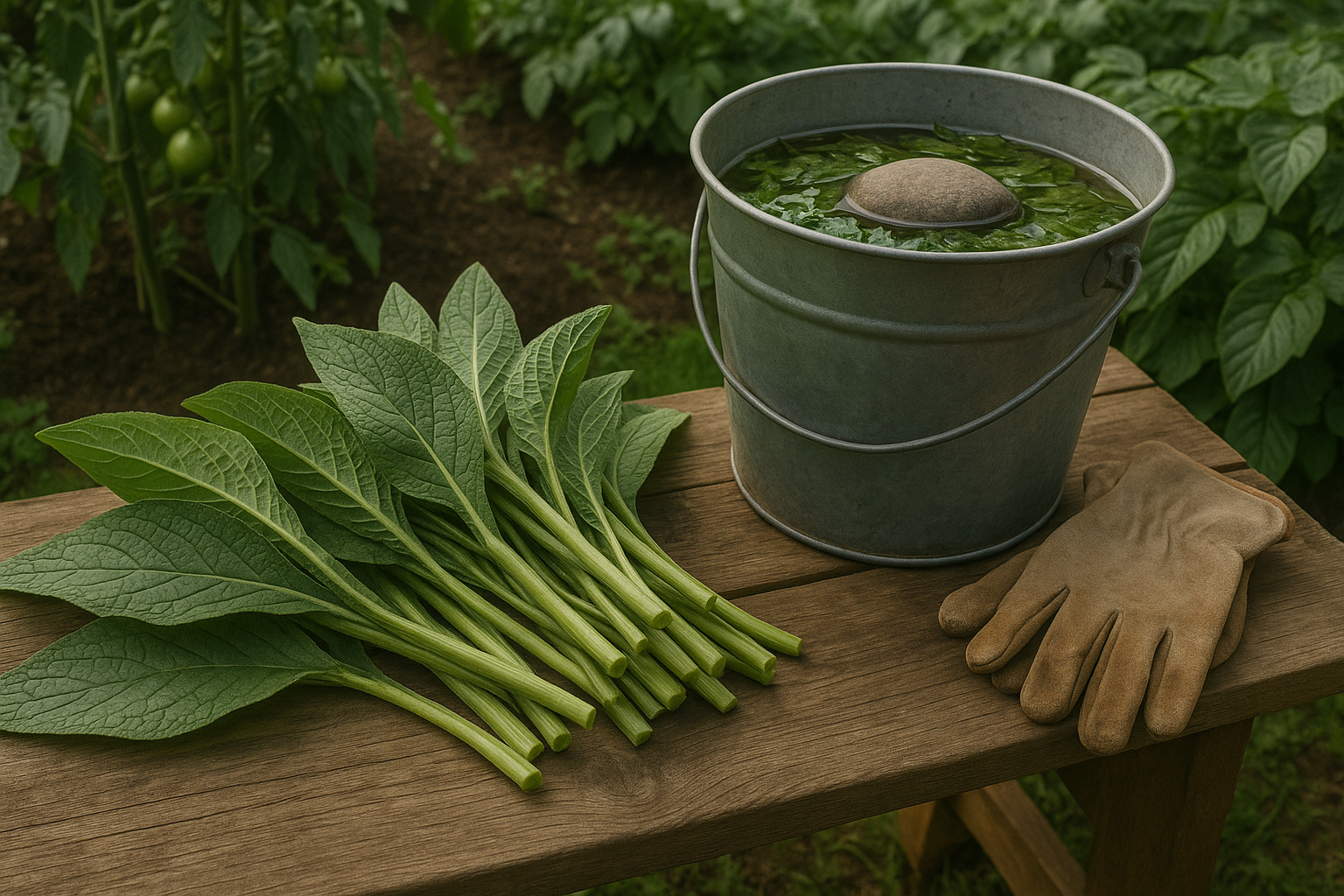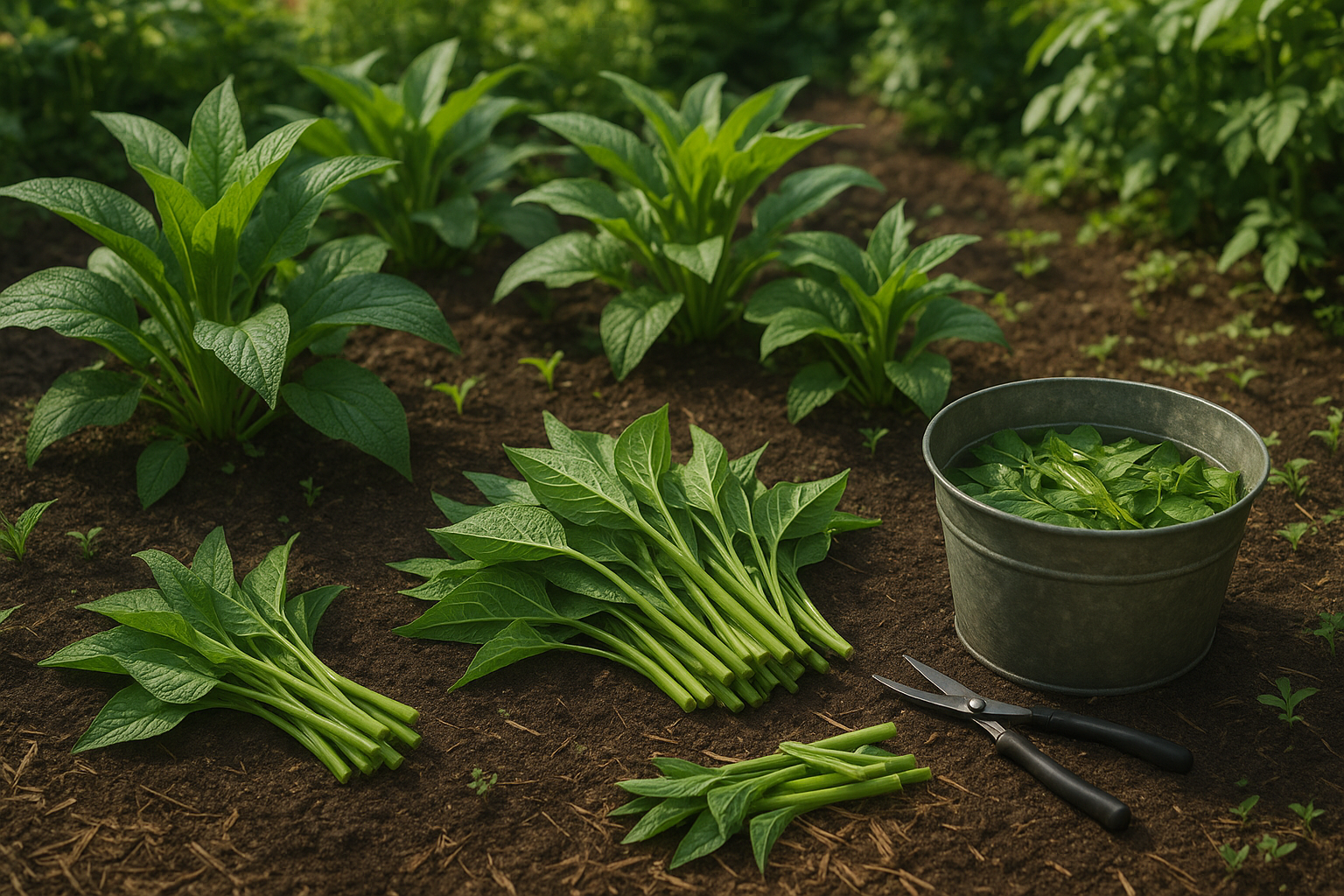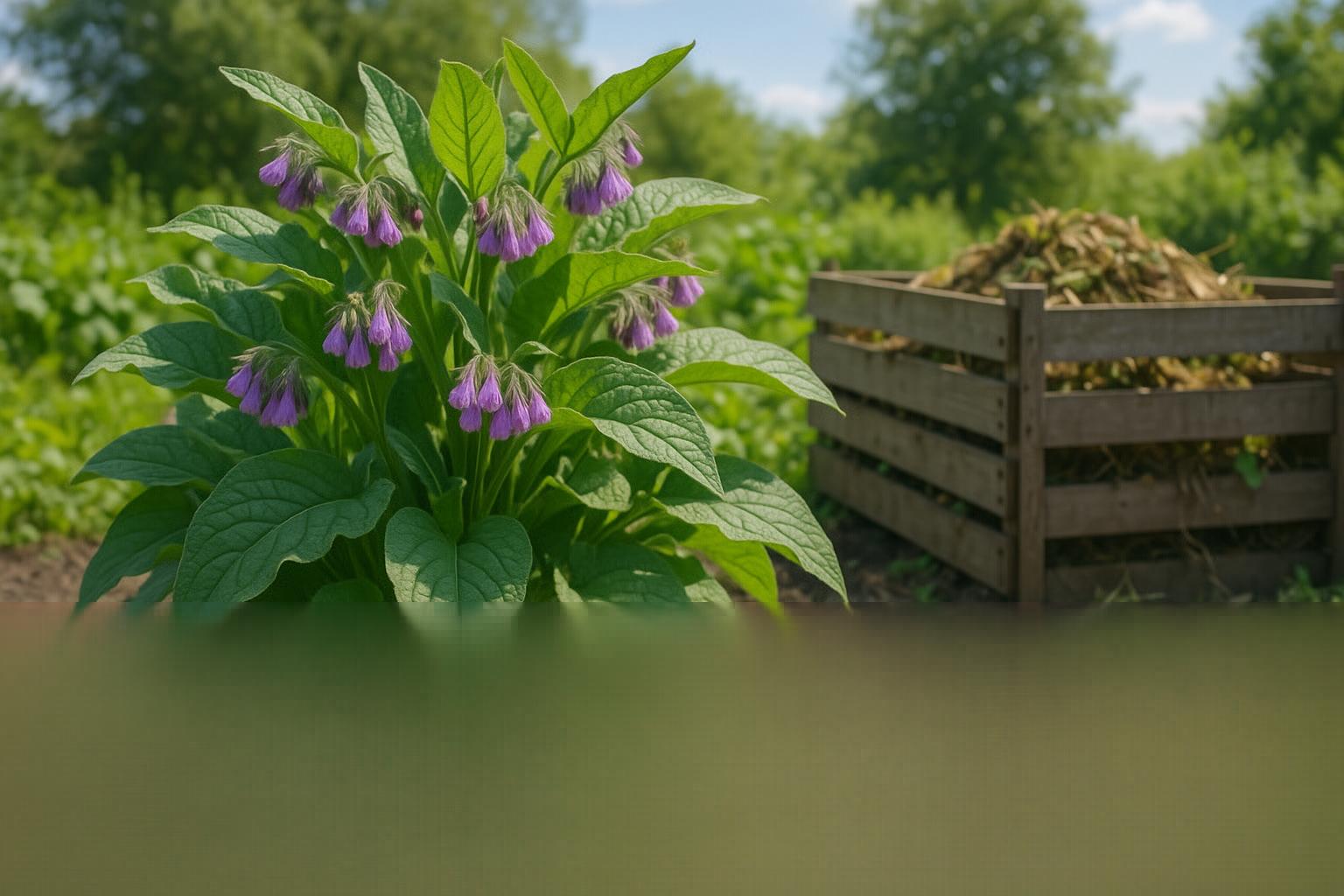Introduction to Comfrey
Comfrey has fascinated gardeners, herbalists, and homesteaders for centuries. Known scientifically as Symphytum officinale, it is a resilient, fast-growing plant with broad leaves and clusters of purple or cream flowers. Historically, it has been used as a medicinal herb since ancient times, earning nicknames like “knitbone” for its role in traditional remedies that support healing bones and skin.
Today, comfrey is equally valued in organic gardening. Its deep roots draw up minerals from the subsoil, making its leaves a nutrient powerhouse for compost and soil enrichment. Many gardeners swear by comfrey tea as a natural way to give their tomatoes, potatoes, and leafy greens a major nutrient boost without synthetic fertilizers. Meanwhile, herbalists continue to craft comfrey salves and ointments that leverage its soothing properties for minor cuts, bruises, and aches—always with careful attention to safety guidelines.
As more people embrace natural, sustainable practices, comfrey’s versatility only grows in appeal. In this post, we’ll explore the main uses of comfrey that have stood the test of time: improving soil and compost, creating herbal salves and topical remedies, and modern tips for harnessing comfrey’s benefits safely and effectively at home.
“`html
Comfrey in the Garden

Comfrey is a powerhouse plant for gardeners who want to improve their soil naturally and boost compost efficiency. Thanks to its deep roots, comfrey mines nutrients like potassium, calcium, and magnesium from below the reach of most vegetables, drawing these minerals up into its broad leaves.
When you chop and drop comfrey leaves around plants or dig them lightly into the soil, you’re delivering a shot of nutrition right where your garden needs it most—think of it as a slow-release fertilizer tailor-made by nature.
In the compost bin, comfrey shines as an activator. It’s packed with nitrogen and moisture, which help kickstart decomposition, heating the pile and breaking down tough materials more quickly. Adding a few handfuls of fresh comfrey leaves or stems every week can noticeably speed up the process, especially if you’re composting lots of carbon-heavy material like dried leaves or straw.
Making Comfrey Tea
For an extra nutrient boost, make your own comfrey tea: simply stuff a container (like a bucket) with chopped comfrey leaves, weigh them down with a stone, and cover with water. Let it steep for two to four weeks, stirring occasionally; the resulting liquid will be dark and rich-smelling.
Before applying, dilute it 1:10 with water because it’s pretty potent. Use comfrey tea as a root drench or foliar spray to perk up veggies and flowers, but avoid overuse since high potassium levels aren’t right for every plant.
Handling Precautions
Always use gloves when handling comfrey: its hairy leaves can irritate sensitive skin.
With these simple strategies, comfrey becomes an invaluable ally, helping any garden thrive naturally.
“`
Comfrey for Homemade Salves and Skin Care
Comfrey has been cherished for centuries in herbal medicine, especially for making soothing salves, ointments, and creams. Traditionally, people used comfrey leaf and root to speed the healing of minor wounds, reduce swelling from bruises, and calm irritated skin. Modern DIY skin care enthusiasts still harness its potent properties, thanks to compounds like allantoin that encourage cell regeneration and skin repair.
If you’re making your own comfrey salve at home, try infusing dried comfrey leaves in carrier oils like olive or coconut oil, then mixing the strained oil with beeswax for a smooth, easy-to-apply balm. This makes a great addition to your first aid kit for scrapes, sprains, and even cracked heels.
However, comfrey should be used with care:
- Avoid applying it to deep or open wounds.
- Never use it on broken skin for prolonged periods due to naturally occurring pyrrolizidine alkaloids, which can be absorbed through the skin and cause liver damage over time.
- Always patch-test homemade comfrey products before widespread use.
- Consult your healthcare provider if you have liver concerns, are pregnant, or want to use salves on children.
By following these practical tips, you can enjoy the natural skin-soothing benefits of comfrey while minimizing the risks.
Comfrey as an Herbal Remedy
Comfrey has a long history in traditional herbal medicine, valued for both external and internal uses. Folk healers often brewed comfrey leaf or root teas to help with digestive discomfort, coughs, and even bone healing—its nickname “knitbone” comes from the belief that it speeds fracture recovery.
Externally, comfrey poultices, salves, and ointments are still commonly used to soothe bruises, sprains, muscle aches, and minor wounds, thanks to its allantoin content, which can support cell regeneration and reduce inflammation.
From a nutritional perspective, comfrey leaves are rich in vitamins A, C, and the B complex, as well as minerals like calcium and potassium, which once made the plant a popular addition to green smoothies and nutritious herbal teas.
However, modern research has raised significant safety concerns about ingesting comfrey. The plant contains pyrrolizidine alkaloids (PAs), which can cause serious liver damage and even cancer when consumed in significant amounts or over an extended period.
In response, regulatory bodies like the FDA and the European Medicines Agency have strongly advised against consuming comfrey products internally, and many countries have banned their sale for oral use outright.
Today, comfrey is still embraced in many natural first-aid kits, but it’s best reserved for external application on unbroken skin—and even then, used with caution and not for prolonged periods. If you’re tempted to take comfrey internally, it’s important to consult an experienced herbalist and follow current guidance to avoid potentially severe side effects.
Growing and Harvesting Comfrey at Home

Comfrey is a powerhouse plant for home gardeners, prized for its rapid growth and usefulness as a dynamic accumulator and natural fertilizer. Start by choosing a suitable variety like Russian comfrey (Bocking 14), which is sterile and won’t self-seed invasively.
Comfrey prefers a sunny spot but will tolerate partial shade, and it thrives in moist, fertile soil enriched with compost. Plant root cuttings or “crowns” about two feet apart in early spring, making sure the soil doesn’t dry out while the plants establish.
Once settled, comfrey grows quickly and requires little maintenance—just keep weeds at bay and consider mulching to retain soil moisture.
Harvesting Comfrey
Wait until your comfrey plant is well established, usually after its first full growing season. When ready, cut stems back to about two inches above the ground using sharp shears. This method encourages vigorous regrowth and allows you to harvest up to three or four times a season. Always leave a few leaves to maintain the plant’s energy reserves.
Using Comfrey in Your Garden
Comfrey leaves can be used to make nutrient-rich compost tea or as mulch around vegetable beds, making it a practical and sustainable addition to any garden.
Final Thoughts
Comfrey is a true garden ally, prized for its ability to enrich compost, nourish soil with nutrients, and even act as a natural mulch. Many gardeners swear by comfrey tea as a potent plant feed, while some herbalists appreciate its traditional use in skin salves for bruises or minor wounds.
However, it’s essential to handle comfrey with care. While topical use can be helpful, never apply it to open wounds, and avoid using it internally altogether, as some compounds in comfrey can cause serious liver damage. Always wear gloves when handling fresh comfrey to avoid skin irritation, and never give home remedies containing comfrey to children or pregnant women.
If you’re curious about adding comfrey to your wellness routine or garden, take time to research thoroughly and consult with a qualified professional or local extension office to ensure you’re using it as safely and effectively as possible.
